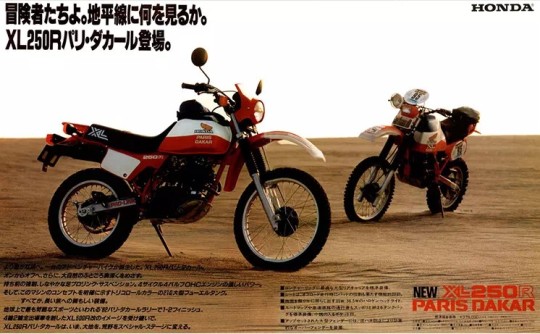#1983 Paris-Dakar
Text



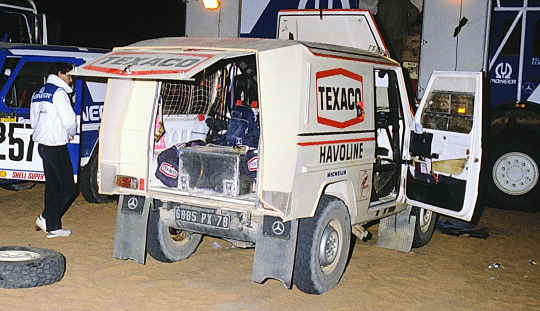
Mercedes-Benz 280 GE Paris-Dakar, 1983. A G-class prepared by Mercedes-Benz France came first in the truck classification in the 1983 Paris-Dakar rally piloted by Jacky Ickx and Claude Brasseur. The M 110 2.8 litre DOHC straight 6 was tuned to produce 197hp thanks to camshafts intended for a performance upgrade of the R107 280 SL. I'd quite like DAMD to make a Suzuki Jimny-based replica based on this
#Mercedes-Benz#Mercedes-Benz G-class#Mercedes-Benz 280 GE Paris-Dakar#1983#1983 Paris-Dakar#rally car#DOHC#straight 6#Jacky Ickx#Claude Brasseur
223 notes
·
View notes
Text

20th century
NISSAN
MOTORSPORTS 1958-2000
'80~
WEC championship,
And to participate in Le Mans
Group C flourishes.
In the early 1980s, the FIA (International Automobile Federation)
The rules and classification of competition vehicles were changed.
Group C vehicles that are racing sports cars
is not classified by displacement as in the past,
Only the total amount of fuel used is specified (good fuel consumption is essential);
What type of engine can you use if you clear this?
It is a challenge for manufacturers as they are willing to participate.
It has become a very important category. The same regulations apply from the following year.
The world championship match “WEC Japan” by Fujis
Since it started at Pedeway, Nissan also started
Developed a carbon engine and mounted it on a foreign chassis.
Start participating. As an extension of that, to the Le Mans 24 Hours.
Participated in the race, the first challenge was in 1986, and the best in 1990.
Although it became a fast machine and won pole position, unfortunately, the battle ends without victory. In the 80s-90s
Also in WSPC (World Sports Prototype Championship) he participated full-time and finished 3rd in the series in 1990.
At that time in the United States, a category similar to Group C, IMSA-GTP, which is a popular cars actively participate in the race, Nissan GTP ZX-T
He was the champion from 1988 to 1999.
Nissan has been in the WRC (World Rally Championship) for 7-8 years.
Although he was able to take second place in the series for three consecutive years, the new vehicle In the era of Group B (starting in 1983) and Group A (starting in 1988) after the regulations came into effect, they often played supporting roles. However, there are still marathon raids such as the Paris-Dakar Rally, and popularity in the United States.
At stadiums, off-road races, etc. that collect
Often achieved good results.
In Japan, in 1985, Group A vehicles began
The Japan Touring Car Championship has begun, and Skyline RS Turbo and GTS-R were part of the winning front. And boasts the strongest Group A machine
R32 Skyline GT-R appears.
On the other hand, the Saurus Cup, March one-make race, or an amateur with many Silvias and Pulsars.
Races for beginners were also widely held nationwide.
Also, the first F1GP race in Japan in 10 years will be held in 8 years.
It was held at Suzuka Circuit and has been held every year since then.
With the introduction of F1, there was a sudden F1 boom in Japan.
/The motorsports boom was ignited.
PIC CAPTIONS
Local Kenyan expert Shehkar Mehta and his beloved PA10 Violet achieved the feat of winning the Safari Rally four years in a row from 1979 to 1982. Among the many international rallies, the Safari Rally is far more demanding than the events held in Western Europe, and it became an ideal venue for Japanese cars to demonstrate their excellence.
_____________________________________________
The "Silhouette Formula" car, which was born in Germany in the late 1970s, is a heavily modified racing car that retains only a slight silhouette of the production car. It is equipped with a trendy turbocharger and captivates fans with its overwhelming straight-line speed. In Japan in the early 1980s, Skylines and Silvias spewed flames and raced around Fuji Speedway and other places. Its power is 570bhp
_____________________________________________
Group C competition, 1985 WEC Japan. More than 80,000 spectators packed into Fuji Speedway in heavy rain. The works Porsche 956 on the first row of the grid withdrew early, and Kazuyoshi Hoshino, driving the March B5G Nissan (No. 28) that qualified third, won the race, which was shortened to two hours due to bad weather. Although bad weather was on their side, it was the first time for a Nissan car and the first Japanese to win a world championship race.
5 notes
·
View notes
Note
Have you ever heard of the Porsche T3 B32 Caravelle?
No but I just looked it up, really cool Van!
Here’s a write up on it:
only 15 examples were ever made (including prototypes) between 1983 and 1985. The reason for the van’s conception was because Porsche needed a fast enough support vehicle to keep pace during its Paris to Dakar rally campaign with its Group B 959 race car.
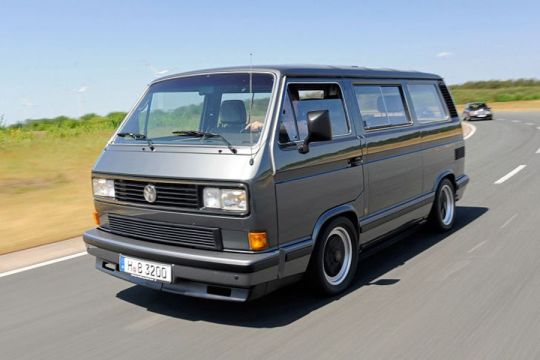
In the van’s rear, Porsche transplanted its 3.2-litre flat-six engine (231hp) from a 911 Carrera; the result was a top speed of around 130mph and a 0-62mph time of 8.0 seconds.
45 notes
·
View notes
Text
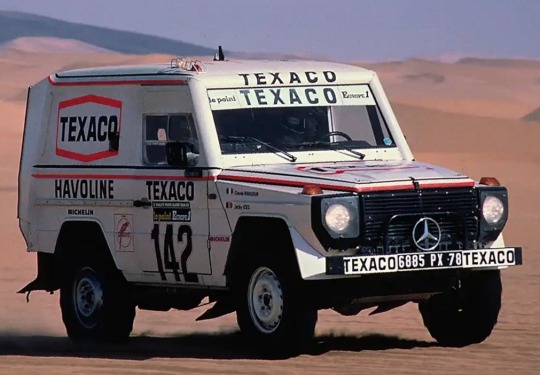
#mercedes benz#g class#g wagon#280 ge#classic cars#classic car#classic#paris dakar#dakar#rally#racing#racing cars#historical#historic#history
10 notes
·
View notes
Photo
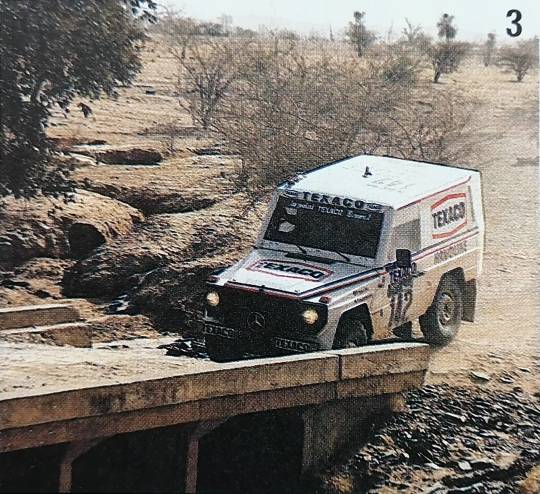
Rally Paris - Dakar 1983
Mercedes-Benz 280GE
52 notes
·
View notes
Text
The Mitsubishi Pajero Evolutionary Timeline
Surely, the Mitsubishi Pajero is one of the most iconic SUVs ever made.

Call it a Shogun, a Raider, a Montero, or a Pajero, this is still a one-of-a-kind beast that once conquered the Dakar Rally like no other. Released back in 1983 with a Land Cruiser- Nissan Patrol motif, the first concept debuted at the Tokyo Auto Show back in 1973 - a Jeep wannabe concept with no doors, no roof but a utilitarian spirit to haul people up the hills.
The first concept didn’t go anywhere, as by that time Land Cruisers and Jeeps were the main themes when it came to off-road SUVs. Mitsubishi never stopped thriving with their dream Pajero and debuted the car in 1979 with a revised concept that was very similar to the Suzuki Samurai, and people loved it.
The first generation Pajero hit the market in 1983, and it was offered in so many engines and body options that there was a Pajero for anyone. After going in and out into adding more and more amenities to match Land Rovers and Toyota Land Cruisers, Mitsubishi has sadly discontinued the Pajero after a 39-year run and more than 3.3 million sales globally. This legendary off-road monster struggled to keep up with the modern demand. Today, we will take a closer look at its evolution over time and give you a final recap of this much- SUV.
First-Gen Pajero: 1983-1991
The first-generation Pajero debuted in 1983. The Pajero was aiming to target a larger consumer market, advertising the Pajero as the ultimate vehicle everyone needed. Interestingly enough, they proved themselves worthy by putting the first-gen Pajero on the Paris To Dakar Rally on stock internals - ending up 11th out of 385 contenders. It was a great success. As opposed to similar SUVs of the time, Mitsubishi was the first to introduce the Pajero with three roof configurations: standard, semi-high, and high-roof.
Five-door models became more popular to appeal to families. The first-gen Pajero could now offer a variety of configurations to either provide comfortable seating for 7, or generous storage areas. A three-door cloth-top version was also available with the first-generation Pajero. Engine options featured an array of turbo diesels or gas-powered V6s and inline-4s. The V6 is the most desirable engine for the first gen. The first-gen models could either be equipped with a five-speed manual or a four-speed automatic transmission.
Part-time four-wheel-drive, coil spring instead of conventional leaf springs, and adjustable suspension were some of the off-road features that took the Pajero ahead of the competition. After 8 years of production, it was time for Pajero to add more amenities, introducing the second generation in 1992.
Second Gen Pajero: 1992-1999
The second-gen Mitsubishi Pajero was released in 1992. Mitsubishi kept offering the Pajero in a three or four-door body style while handling buyers the choice of picking between a wide array of engine options - inline-fours, V6, and turbo diesels. Offered in a dual-tone colour scheme gave the Pajero better styling - a refreshed front fascia and a list of added amenities made the Pajero a much more desirable daily driver while retaining all the off-road spirit.
The biggest jump from the first-gen model was the upgrade to Super Select transmission. This gave drivers the choice of picking between rear-wheel drive or all-wheel-drive. The second-gen Pajero came with three differentials and a standard centre differential lock. All Pajero models came standard with a two-speed transfer case.
Four engine configurations were available for the second-generation Pajero. Diesel engines came in 2.8 and 2.5-litres. The 2.8TD engine made 125 Hp and 215 lb-ft of torque, while the smaller 2.5TD made 99 ponies and 177 lb-ft of torque.
Gas engines came in 3.0 or 3.5-litre V6 units. The latter produces 208 Hp and 221 lb-ft of torque, followed by the smaller 3.0-liter producing 150 Hp and 174 lb-ft of torque. A five-speed manual or 4-speed auto was available for the second generation. The 3.5-litre V6 was the fastest Pajero of the second generation, which did 0-60 mph in 10.5 seconds and reached a top speed of 114.9 mph.
Third-Generation Pajero: 2000-2006
By the year 2000, the earth had entered a new millennium and a very great focus was put on comfort, as people weren’t really taking their Pajeros/Monteros off the pavement. This was a big time for Mitsubishi as the third-gen underwent the biggest update so far into its production history. The ultimate SUV was now no longer built as a body-on-frame, but it went with unibody construction and independent suspensions in all four corners. The update promised an increased torsional rigidity and drastically improved cabin strength. At the time, Mitsubishi was chasing after the Land Rover Defender, Toyota Land Cruiser, and the rise of the Lexus LX.
Bigger and thicker was the name of the game back in 2000 as the Pajero was also buffed in interior size to accommodate more. Engine options were a 3.2-litre diesel producing 165 Hp and 275 lb-ft of torque or a 3.5-litre V6 gas engine producing 202 Hp and 235 lb-ft of torque.
This was up until Mitsubishi updated the third-gen model to a facelifted version in 2003. More opulent tech and revised engines with boosted power came in.
Pajero Sport: 2004-2008
Between 2004 and 2008 Mitsubishi happened to offer the Pajero as an “off-road pickup truck” that was more popular on the European market. This model looked like a station wagon, and it was based on the Mitsubishi L200, but it looked very different and more rugged from the latter. This was offered only as a 5-seater, but with a decent-sized bed. Mitsubishi switched from cloth-top two-door SUVs to strangely shaped pickup trucks.
These models were powered by a 2.5 TurboDiesel producing 115 Hp or a 3.0-litre V6 producing 170 Hp. The diesel ran up to 93mph, while the more powerful V6 gas engine ran to 109 mph max speed. This is a step-down from the usual SUV Pajero, and it was soon discontinued in 2008.
Four-Generation: 2006-2019
Mitsubishi gained back traction with its fourth generation, which has a reputation for reliability. The latter went back to body-on-frame construction and dropped the production of strangely shaped pickups to focus on what they did best with their first and second-gen models. A three-slot chromed grille was added, as were larger, taller headlights. It was available in three and five-door configurations. The former was only available with 5 seats, while the latter had 7 seats. The fourth-gen model was the only 4x4 vehicle in the world with a 4x4 on-demand system that could be driven as an all-wheel-drive vehicle thanks to its three differentials. The transmission was also upgraded to the Aisin-Warner A750F - also found in heavy-duty Toyota models of the time.
The fourth generation received a touch of new tech, as well as updated and more powerful engines. The new 3.8-litre V6 engine produced 244 hp and 243 lb-ft of torque. The 3.2-litre turbo diesel engine generated 197 Hp and 325 lb-ft of torque. This however was the very last generation for Mitsubishi, although many facelifts with updated interior and engine configurations came along. The exterior remained the same, and Mitsubishi struggled to get into the new SUV audience.
A final edition variant was put out on sale for only 1000 total Pajeros, ending a four-decade-long race of the Dakar Rally.
If you are on the hunt today to get yourself a Mitsubishi Pajero, we would recommend finding a first-gen model with a V6 and a cloth top. This could be the perfect project off-roader, although you might find newer models more opulent.
Fun Fact: The Mitsubishi Pajero holds the world record for winning the Paris-Dakar Rallye-raid, 12 times.
.
.
.
Sourced from https://www.hotcars.com/
2 notes
·
View notes
Text
LÉGENDES DU JAZZ
HOMMAGE À CHRISTIAN ESCOUDÉ 1947-2024
Né le 23 septembre 1947 à Angoulême, en France, Christian Escoudé était d’origine tsigane par son père. La famille Escoudé, qui était d’origine espagnole, s’était installée en Charente lorsque les troupes nazies avaient envahi la France en juin 1940. La mère de Christian était d’origine charentaise.
Également guitariste, le père de Christian avait été très influencé par Django Reinhardt. Christian avait commencé à apprendre la guitare avec son père et son oncle à l’âge de dix ans. Après avoir joué dans différents bals de la région, Christian a été engagé en 1969, à l’âge de vingt et un ans, par l’orchestre d’Aimé Barelli à Monte-Carlo, dont il fera partie jusqu’en 1971.
DÉBUTS DE CARRIÈRE
Au début des années 1970, Escoudé s’installe à Paris et travaille comme musicien de studio avec des vedettes de la musique pop comme Jean Ferrat, Michel Fugain et Nicole Croisille.
Escoudé a amorcé sa carrière professionnelle en 1972 en se produisant avec le trio du batteur Aldo Romano, qui comprenait également Eddy Louis à l’orgue et Bernard Lubat à la batterie. Plus tard, Escoudé s’était joint au Swing String System de Didier Levallet et au Michel Portal Unit. Après avoir remporté le Prix Django Reinhardt décerné par l'Académie du Jazz en décembre 1975 (il est un des seuls guitaristes de jazz à avoir remporté cet honneur), Escoudé avait formé un quartet avec le pianiste Michel Graillier, le batteur Aldo Romano et le contrebassiste Alby Cullaz (qui fut bientôt remplacé par Jean-François Jenny-Clark). Escoudé avait travaillé par la suite avec Michel Portal, Slide Hampton, Martial Solal et Jean-Claude Fohrenbach.
En 1978, Escoudé s’était produit au Festival de jazz de Nice aux côtés de John Lewis, Bill Evans, Stan Getz, Freddie Hubbard, Philly Joe Jones, Elvin Jones, Lee Konitz et Shelly Manne. La même année, Escoudé avait joué pour la première fois au Festival de Samois dans le cadre d’un hommage à son idole Django Reinhardt. Il a aussi enregistré avec le contrebassiste Charlie Haden. L’année suivante, Escoudé s’était produit au Festival de Dakar avec un trio composé du pianiste René Urtreger, du contrebassiste Pierre Michelot et du batteur et compositeur d’origine suisse Daniel Humair.
À l’été 1980, Escoudé avait obtenu une des grandes chances de sa carrière lorsqu’il avait été invité à jouer en duo avec le guitariste de fusion John McLaughlin, avec qui il avait fait une tournée aux États-Unis, au Brésil et au Japon. L’année suivante, Escoudé s’était joint au big band de Martial Solal. Après avoir joué aux États-Unis avec le quartet du batteur Shelly Manne en 1982, Escoudé a formé son propre quartet avec Olivier Hutman aux claviers, Nicolas Fitzman à la contrebasse et Jean My Truong aux percussions. Ces deux derniers avaient été remplacés par la suite par Jean-Marc Jafet et Tony Rabeson.
En 1983, Escoudé forme un duo avec le violoniste Didier Lockwood. Le groupe s’était par la suite transformé en trio après l’ajout du guitariste belge Philip Catherine. Après avoir formé un trio avec le violoncelliste Jean-Charles Capon et le contrebassiste Ron Carter en 1985, Escoudé avait formé le Trio Gitan avec Boulou Ferré (le fils de Matelo Ferret) et Babik Reinhardt, le fils de Django. En 1987, il se produit en duo avec le pianiste Michel Graillier.
En 1988, Escoudé s’était joint à un quartet composé de Jean-Michel Pilc, François Moutin et Louis Moutin. L’année suivante, Escoudé avait fondé un octet avec les guitaristes Paul Challain Ferret, Jimmy Gourley et Frédéric Sylvestre, l’accordéoniste Marcel Azzola, le violoncelliste Vincent Courtois, le contrebassiste Alby Cullaz et le batteur Billy Hart.
DERNIÈRES ANNÉES
En 1990, Escoudé s’était produit au légendaire Village Vanguard de New York avec le pianiste Hank Jones, le contrebassiste Pierre Michelot et le batteur Kenny Washington. L’année suivante, Escoudé avait enregistré un album entièrement consacré à des compositions de Django Reinhardt. L’album avait été enregistré avec avec un orchestre à cordes. En 1993, Escoudé enregistre à Los Angeles avec Lou Levy, Bob Magnusson et Billy Higgins.
En 1998, Escoudé avait enchaîné avec ‘’A Suite for Gypsies’’, un album de jazz-fusion destiné à honorer les enfants gitans morts dans les camps de concentration nazis. Deux ans plus tard, Escoudé remporte le Grand Prix de la SACEM.
À l’occasion du 50e anniversaire de la mort de Django en 2003, Escoudé avait formé un big band de dix-sept musiciens dans lequel il explorait l’héritage musical de Reinhardt tout en y incorporant ses propres idées harmoniques et rythmiques. L’année suivante, Escoudé avait créé le New Gypsy Trio avec David Reinhardt (un autre parent de Django) et Martin Taylor (aussi connu sous le nom de Jean-Baptiste Laya). Après avoir publié l’album Ma Ya en 2005, Escoudé avait formé le Progressive Sextet avec Marcel Azzola, Jean-Baptiste Laya, Sylvain Guillaume, Jean-Marc Jafet et Yoann Serra.
En 2012, Escoudé avait rendu hommage à l’auteur-compositeur Georges Brassens dans le cadre de l’album ‘’Christian Escoudé joue Brassens: Au bois de mon cœur.’’ Participaient également à l’album le contrebassiste Pierre Boussaguet et la batteuse Anne Paceo, ainsi que des artistes invités comprenant la violoniste Fiona Monbet, le clarinettiste Andre Villeger, le guitariste Biréli Lagrène et le guitariste manouche de onze ans Swan Berger.
En 2019, Escoudé avait surpris tout le monde en lançant à l’abbaye de Saint-Amant-de-Boixe un second album en hommage à son idole Django Reinhardt.
Christian Escoudé est mort d’un cancer le matin du 13 mai 2024 à Saint-Amant-de-Boixe (Charente), près d’Angoulême, à l’âge de soixante-seize ans. La mort d’Escoudé avait été annoncée par Max Robin, le directeur artistique de la compagnie Label Ouest qui avait publié son dernier album intitulé ‘’Ancrage.’’ Décrivant Escoudé comme un grand musicien, compositeur et improvisateur, Robin avait souligné son engagement dans la musique.
Escoudé avait été victime d’un cancer particulièrement foudroyant. Jean Ledroit, un ami et voisin d’Escoudé à Saint-Amant-de-Boix ‘’On devait jouer avec lui il y a trois semaines à Mansle mais il était déjà malade. C’est brutal {...}. On a perdu un monstre sacré du jazz, le digne successeur de Django Reinhardt ’’.
François Ducharme, l’ancien président de l'Académie du jazz et un des programmateurs de l'émission de radio "Club Jazzafip", avait ajouté: "Un musicien intuitif avec cette poésie au bout des doigts. Un enfant de la balle, comme on dit, à qui on a mis une guitare dans les mains et qui en a fait son métier très jeune, jouant dans les bals, localement, avant de monter à Paris".
Caractérisé par un style très mélodique et très chaud, Escoudé avait participé à l’enregistrement de plus de 50 albums au cours de sa carrière. Le style d’Escoudé était un mélange de bebop et de musique gypsy. Passionné par le jazz, Escoudé s’intéressait également à la musique de chambre. Comme compositeur, Escoudé avait été très influencé par Gil Evans, Claus Ogerman et Antonio Carlos Jobim. En 2022, Escoudé avait vu sa carrière être couronnée par la remise d’un prix Victoire d'honneur du Jazz.
Reconnu pour sa modestie et son sens de l’humour, Escoudé ne s’était jamais enflé la tête avec ses réalisations. Françoise Giroux-Mallot, la mairesse de Saint-Amant-de-Boixe, avait commenté: ‘’C’était quelqu’un d’accessible, modeste et bienveillant.’’ Au cours d’une de ses dernières entrevues, Escoudé était d’ailleurs demeuré très terre-à-terre. Il avait précisé: ‘’On les perd forcément {nos illusions} à un moment mais je pense avoir respecté mon intégrité. Je n’ai jamais été très loin dans les excès, ce n’est pas dans ma nature.’’
©-2024, tous droits réservés, Les Productions de l’Imaginaire historique
1 note
·
View note
Text
Yamaha Ténéré 700: Uma moto para explorar o mundo
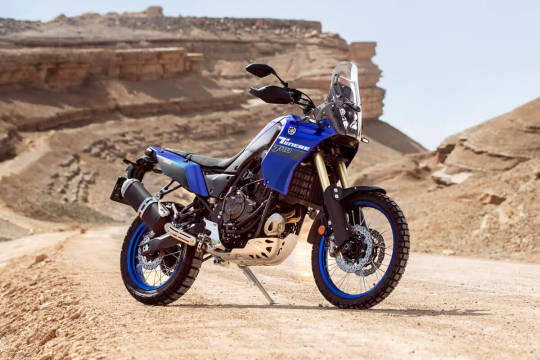

Você já sonhou em viajar pelo mundo sobre duas rodas, enfrentando os mais variados terrenos e desafios, sem abrir mão do conforto e da diversão? Se a resposta for sim, você precisa conhecer a Yamaha Ténéré 700, uma moto que combina o espírito aventureiro das lendárias XT com a tecnologia e o design modernos. Neste artigo, vamos contar um pouco da história dessa moto, destacar as suas principais características e vantagens, dar algumas dicas para quem quer se aventurar com ela e responder as dúvidas mais comuns sobre esse modelo. Acompanhe!
A origem da Yamaha Ténéré 700
A Yamaha Ténéré 700 é a herdeira de uma tradição que começou em 1983, quando a Yamaha lançou a XT600Z Ténéré, uma moto inspirada nas competições de rali, especialmente no Rally Paris-Dakar, que atravessava o deserto do Saara. O nome Ténéré vem de uma região desértica no norte da África, que significa “deserto” ou “solidão” na língua tuaregue. A XT600Z Ténéré foi um sucesso de vendas e de crítica, sendo considerada uma das melhores motos de aventura da época. Ela tinha um tanque de combustível de 30 litros, que permitia uma grande autonomia, um motor robusto e confiável, uma suspensão de longo curso e um design marcante, com um grande farol dianteiro e uma carenagem que protegia o piloto do vento e da areia.
Ao longo dos anos, a Yamaha foi aprimorando e diversificando a linha Ténéré, lançando modelos como a XTZ750 Super Ténéré, a XTZ660 Ténéré, a XT1200Z Super Ténéré e a XT660Z Ténéré. Todas elas mantinham a essência da XT original, mas com motores mais potentes, sistemas de freios e de controle de tração mais avançados, painéis digitais e outros recursos que aumentavam o desempenho e a segurança das motos. Porém, muitos fãs da marca sentiam falta de uma moto que fosse mais fiel ao conceito original da Ténéré, ou seja, uma moto simples, leve, ágil e versátil, capaz de encarar qualquer tipo de terreno com facilidade e diversão.
Foi pensando nesse público que a Yamaha desenvolveu a Ténéré 700, que foi apresentada como protótipo em 2016, no Salão de Milão, e lançada oficialmente em 2019, na Europa. A Ténéré 700 é uma moto que resgata o espírito das primeiras XT, mas com um visual moderno e arrojado, um motor bicilíndrico de 689 cc e 73,4 cavalos de potência, que também equipa a MT-07, uma suspensão totalmente ajustável de longo curso, um chassi rígido e leve, um tanque de 16 litros, um painel digital ao estilo rali, quatro faróis de LED e um peso de apenas 204 kg (a seco). A Yamaha Ténéré 700 é uma moto que promete satisfazer os motociclistas mais exigentes e aventureiros, que buscam uma máquina capaz de explorar o mundo sem limites.
Os diferenciais da Ténéré 700
A Yamaha Ténéré 700 é uma moto que se destaca por vários motivos, mas podemos destacar alguns que fazem dela uma opção única no mercado. Veja quais são:
- O motor: O motor da Yamaha Ténéré 700 é um dos seus pontos fortes. Trata-se de um bicilíndrico paralelo de 689 cc, com refrigeração líquida, quatro válvulas por cilindro e duplo comando no cabeçote. Esse motor é derivado da MT-07, mas recebeu algumas modificações para se adaptar melhor ao uso off-road, como um novo mapeamento da injeção eletrônica, um novo sistema de escapamento e um novo radiador. O resultado é um motor que entrega 73,4 cavalos de potência a 9.000 rpm e 6,9 kgfm de torque a 6.500 rpm, com uma curva de torque plana e linear, que garante uma resposta rápida e suave do acelerador em qualquer faixa de rotação. O motor da Ténéré 700 é ideal para quem quer uma moto que tenha força e agilidade tanto na estrada quanto na terra, sem perder a economia e a confiabilidade.
- A suspensão: A suspensão da Ténéré 700 é outro aspecto que chama a atenção. Ela é composta por uma suspensão dianteira invertida da marca Kayaba, com tubos de 43 mm de diâmetro e 210 mm de curso, totalmente ajustável na pré-carga, compressão e retorno. A suspensão traseira é monoamortecida, também da Kayaba, com 200 mm de curso e ajustável na pré-carga e no retorno. Essa suspensão permite que o piloto adapte a moto às suas preferências e às condições do terreno, podendo variar a altura, a rigidez e a estabilidade da moto. Além disso, a suspensão de longo curso absorve bem as irregularidades do solo, proporcionando conforto e controle ao piloto.
- O chassi: O chassi da Ténéré 700 é outro diferencial da moto. Ele é feito de aço tubular, com um desenho compacto e resistente, que confere à moto uma ótima rigidez torcional e uma boa distribuição de peso. O chassi também permite uma boa ergonomia ao piloto, com um assento estreito e confortável, um guidão largo e alto, um tanque bem desenhado e umas pedaleiras bem posicionadas. O chassi da Ténéré 700 também facilita a pilotagem da moto, pois permite uma boa movimentação do corpo e uma boa visibilidade do terreno. Além disso, o chassi é leve, pesando apenas 204 kg (a seco), o que contribui para a agilidade e a versatilidade da moto.
- O design: O design da Ténéré 700 é outro ponto que merece destaque. A moto tem um visual moderno e arrojado, que remete às motos de rali, mas sem perder a identidade da linha Ténéré. A moto tem uma carenagem frontal que protege o piloto do vento e da poeira, com quatro faróis de LED que iluminam bem a noite e o dia. O painel é digital e compacto, com um visor de LCD que mostra as informações essenciais, como velocímetro, conta-giros, hodômetro, nível de combustível, consumo médio, temperatura do motor, relógio e indicador de marcha. O painel também tem um suporte para fixar um GPS ou um smartphone, facilitando a navegação.
A moto tem ainda um escapamento alto e curto, que evita o contato com o solo e emite um ronco grave e agradável. As rodas são de alumínio, com aros de 21 polegadas na dianteira e 18 polegadas na traseira, calçadas com pneus de uso misto que garantem uma boa aderência em qualquer superfície. A moto tem ainda um para-brisa ajustável, um protetor de cárter, um protetor de mãos, um bagageiro traseiro e um suporte para bauleto. A moto está disponível nas cores azul, preta e branca, com grafismos que remetem à Yamaha Racing.
As sugestões parecidas com a Yamaha Ténéré 700
A Yamaha Ténéré 700 é uma moto que não tem muitas concorrentes diretas no mercado, pois ela se encaixa em uma categoria que mistura as motos trail com as motos big trail, oferecendo uma opção mais simples, leve e acessível do que as motos de alta cilindrada, mas mais robusta, potente e confortável do que as motos de baixa cilindrada. Porém, existem algumas motos que podem ser consideradas parecidas com a Ténéré 700, seja pelo conceito, pelo desempenho ou pelo preço. Veja quais são:
- KTM 790 Adventure: A KTM 790 Adventure é uma moto que também segue a proposta de ser uma moto de aventura leve e versátil, capaz de rodar bem na estrada e na terra. Ela tem um motor bicilíndrico de 799 cc e 95 cavalos de potência, uma suspensão de longo curso com ajuste eletrônico, um tanque de 20 litros, um painel digital com conectividade, um sistema de freios ABS com modos de pilotagem e um design agressivo e esportivo. A KTM 790 Adventure é uma moto que oferece mais potência, tecnologia e sofisticação do que a Yamaha Ténéré 700, mas também é mais cara, pesada e complexa.
- Honda Africa Twin: A Honda Africa Twin é uma moto que também tem uma história ligada ao Rally Paris-Dakar, sendo uma das motos mais vencedoras dessa competição. Ela tem um motor bicilíndrico de 1084 cc e 102 cavalos de potência, uma suspensão de longo curso com ajuste eletrônico, um tanque de 18,8 litros, um painel digital com conectividade, um sistema de freios ABS com modos de pilotagem e um design elegante e robusto. A Honda Africa Twin é uma moto que oferece mais potência, tecnologia e conforto do que a Yamaha Ténéré 700, mas também é mais cara, pesada e sofisticada.
- BMW F 850 GS: A BMW F 850 GS é uma moto que também faz parte da família GS, que é uma referência em motos de aventura. Ela tem um motor bicilíndrico de 853 cc e 95 cavalos de potência, uma suspensão de longo curso com ajuste eletrônico, um tanque de 15 litros, um painel digital com conectividade, um sistema de freios ABS com modos de pilotagem e um design moderno e refinado. A BMW F 850 GS é uma moto que oferece mais potência, tecnologia e requinte do que a Yamaha Ténéré 700, mas também é mais cara, pesada e sofisticada.
As dúvidas comuns sobre a Ténéré 700
A Yamaha Ténéré 700 é uma moto que desperta o interesse e a curiosidade de muitos motociclistas, mas também gera algumas dúvidas. Vamos responder as mais frequentes:
- Qual é o preço da Yamaha Ténéré 700? A Ténéré 700 tem um preço sugerido de R$ 49.990,00, na versão standard, e de R$ 52.990,00, na versão Rally Edition, que tem alguns acessórios exclusivos, como um banco especial, um protetor de tanque, um protetor de motor e um escapamento Akrapovic. Esse preço pode variar de acordo com a região, a concessionária e as condições de pagamento.
- Qual é o consumo da Yamaha Ténéré 700? A Ténéré 700 tem um consumo médio de 21 km/l, segundo o Inmetro, podendo variar de acordo com o modo de pilotagem, o tipo de terreno e a manutenção da moto. Com isso, a moto tem uma autonomia de cerca de 330 km, com o tanque cheio.
- Qual é a velocidade máxima da Yamaha Ténéré 700? A Ténéré 700 tem uma velocidade máxima de cerca de 200 km/h, limitada eletronicamente, podendo variar de acordo com o peso do piloto, a carga da moto e as condições do vento. A moto tem um bom desempenho em altas velocidades, mas não é o seu foco principal.
- A Yamaha Ténéré 700 é boa para iniciantes? A Ténéré 700 é uma moto que exige um certo nível de experiência e habilidade do piloto, pois ela tem uma potência considerável, uma altura elevada e um peso significativo. Além disso, a moto não tem nenhum controle eletrônico de tração ou de estabilidade, o que requer mais atenção e cuidado do piloto. Portanto, a Yamaha Ténéré 700 não é uma moto recomendada para iniciantes, mas sim para motociclistas que já tenham uma certa prática e confiança na pilotagem.
- A Yamaha Ténéré 700 é boa para viagens longas? A Ténéré 700 é uma moto que pode ser usada para viagens longas, pois ela tem um bom conforto, uma boa autonomia, uma boa capacidade de carga e uma boa versatilidade. Porém, a moto também tem alguns pontos que podem ser melhorados para esse tipo de uso, como o banco, que pode ser um pouco duro e estreito, o para-brisa, que pode ser um pouco baixo e pequeno, e o tanque, que pode ser um pouco limitado. Esses pontos podem ser resolvidos com alguns acessórios, como um banco mais confortável, um para-brisa maior e um tanque auxiliar.
A conclusão sobre a Yamaha Ténéré 700
A Yamaha Ténéré 700 é uma moto que cumpre o que promete: ser uma moto de aventura leve, ágil, versátil e divertida, capaz de explorar o mundo sem limites. Ela é uma moto que resgata o espírito das primeiras XT, mas com um visual moderno e arrojado, um motor bicilíndrico de 689 cc e 73,4 cavalos de potência, uma suspensão totalmente ajustável de longo curso, um chassi rígido e leve, um tanque de 16 litros, um painel digital ao estilo rali, quatro faróis de LED e um peso de apenas 204 kg (a seco). A Ténéré 700 é uma moto que satisfaz os motociclistas mais exigentes e aventureiros, que buscam uma máquina capaz de explorar o mundo sem limites.
Se você gostou deste artigo, compartilhe com os seus amigos nas redes sociais e deixe o seu comentário abaixo. E se você quer saber mais sobre a Yamaha Ténéré 700, visite o site oficial da Yamaha ou procure a concessionária mais próxima de você.
Read the full article
0 notes
Text
Yamaha celebrates 40 Years of Ténéré


Yamaha is proud to celebrate the 40-year anniversary of the iconic Ténéré. Since its inception in 1983 with the XT600Z, the Ténéré has captivated the hearts and minds of adventure enthusiasts around the globe and this milestone calls for a grand commemoration.
Over the past four decades, the Yamaha Ténéré has forged its legacy as a symbol of the adventure spirit, exploration and resilience. From conquering the treacherous terrains of the Paris-Dakar Rally to inspiring riders to push the boundaries of what is possible, the Ténéré has become a true legend in the motorcycle world.
In the decades since Cyril Neveu claimed a historic double victory in the first and second Paris-Dakar rallies in 1979-80 on the XT500, Team Yamaha has accomplished some incredible rallying achievements. Ténéré icons such as Jean-Claude Olivier, Serge Bacou, and ‘Monsieur Dakar’ Stéphane Peterhansel, whose record of six Yamaha victories that began in 1991 remains unbeaten to this day, took their machines across some of the world’s most demanding terrain. Most recently, legendary adventurer and Yamaha ambassador Nick Sanders finished his latest trip around the globe on his Ténéré 700, while factory riders Pol Tarrés and Alessandro Botturi continue to make rally racing history on their the GYTR-kitted Ténéré 700 World Raid’s.
To celebrate this remarkable journey and these legendary riders together with the Ténéré community, Yamaha has embarked on a 40th Anniversary tour across Europe. A collection of historic Ténéré production models (1983-2010), as well as original Dakar classics will be showcased, allowing enthusiasts to witness first-hand the evolution of this iconic adventure machine.
In addition to a full line-up of the latest Ténéré models that event participants can test ride, the 40th Anniversary tour will also see the public launch of the new Ténéré 700 World Rally. Displayed in striking factory racing colours inspired by the YZE 850 that took Peterhansel to victory in 1993, the Ténéré 700 World Rally is a fusion of Yamaha’s desert racing heritage with modern, world-class performance. A name synonymous with desert racing success and boundary-pushing technology, the latest generation Ténéré 700 represents four decades of experience and success coming together in a machine unrivalled in ability and adventurous spirit.
The Ténéré 40th Anniversary tour made a triumphant stop at the Adventure Bike Rider Festival, the largest adventure riding festival in Europe. The event was a resounding success, with a vibrant atmosphere and an overwhelming sense of excitement among attendees. Yamaha celebrated this momentous occasion alongside the passionate Ténéré community. Festival-goers had the opportunity to experience the Ténéré's prowess firsthand through thrilling off-road and on-road test rides on the latest Yamaha models. Expert demo rides showcased the Ténéré's capabilities in challenging terrain and to top it all off, Yamaha's ambassador, the legendary Nick Sanders, joined the festivities and shared his captivating adventure movie, leaving everyone inspired by his incredible journeys. The Adventure Bike Rider Festival proved to be an unforgettable celebration of Yamaha's 40-year milestone with the Ténéré, solidifying its legacy as an icon in the world of adventure riding.
The Ténéré 40th Anniversary tour will visit the following upcoming events:
Ténéré Spirit Aguilar de Campoo | 31 June – 1 July | Spain
MaxlRIDE Motofestival | 25-27 August | Germany
Alpes Aventure Motofestival | 8-10 September | France
More events might be added to the schedule throughout the year. For more information please contact your national Yamaha distributor.
For more Yamaha Motorcycles UK news check out our dedicated page Yamaha Motorcycles UK
or head to the official Yamaha Motorcycles UK website yamaha-motor.eu/gb/en/
Read the full article
0 notes
Text
Paris-Dakar 1983: 40 years ago, the triumph of Mercedes and Jacky Ickx
Paris-Dakar 1983: 40 years ago, the triumph of Mercedes and Jacky Ickx
Of Ténéré south of the Saharaparticipants must reach the Atlantic coast, where Dakar is, the place of arrival of the legendary rally-raid in 1983.
With many steps and an great crossing of the desert, the Paris–Dakar is considered the most complex gender event in the world, a reputation it still earns today.
Since its first edition in 1978many renowned car manufacturers are drawn to the tracks of…
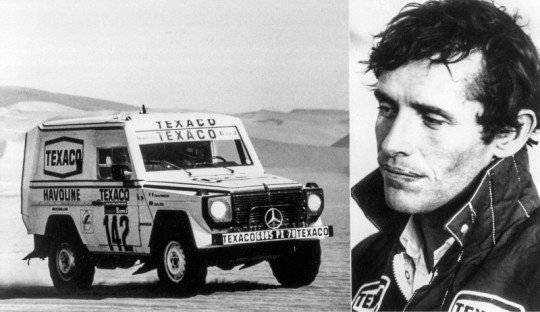
View On WordPress
0 notes
Text
Gabon, Nomination | Denis Dernault DG des Hôtels Radisson Blu Okoumé Palace et Park Inn by Radisson Libreville
Gabon, Nomination | Denis Dernault DG des Hôtels Radisson Blu Okoumé Palace et Park Inn by Radisson Libreville
Radisson depuis 2015, Denis Dernault (BTS • Lycee Hotelier de Paris – Master Management Hotelier 1983 • Cornell 2011) est donc transféré de Dakar, où il occupait le poste de Directeur du pôle hôtelier, à Libreville où il supervisera le cluster Radisson et ses deux établissements. C’est en 2015 qu’il démarra sa “carrière Radisson” en prenant tête du Radisson Blu Hotel & Convention Centre de…
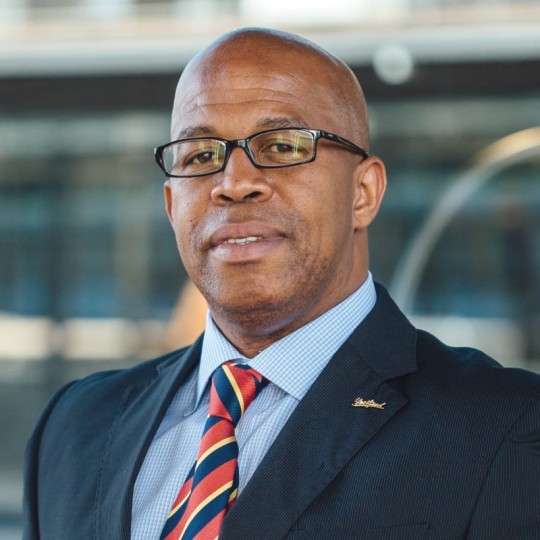
View On WordPress
0 notes
Photo
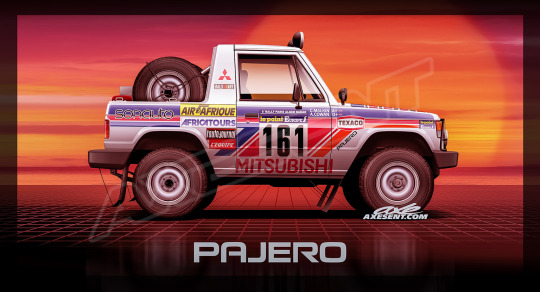
www.axesent.com
Mitsubishi Pajero - 1983 Paris - Dakar
#pajero#mitsubishi#dakar#paris#rally#cowan#axesent#kansei gazou#80s#car art#auto art#digital illustrations#axe#axe render
44 notes
·
View notes
Photo
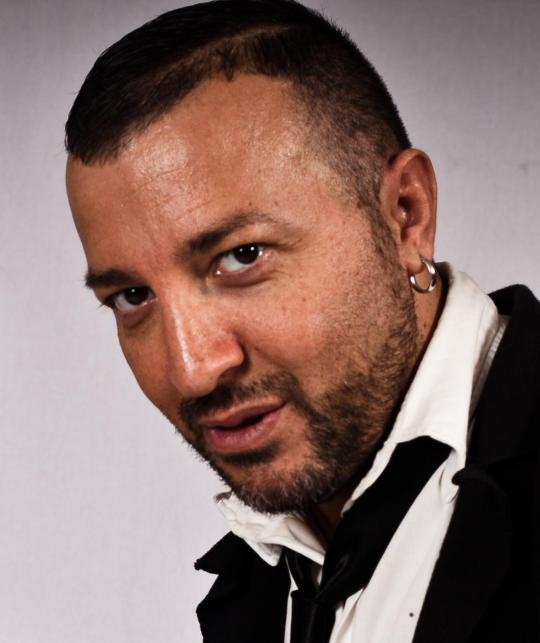
Gigi Les Autres fino al 26/9 partecipa alla 37° edizione di "The Look of the Year Fashion Award"
Gigi Les Autres (nella foto), hair stylist di livello internazionale, parteciperà alla finale mondiale di "The Look of the Year Fashion Award", in programma tra Sanremo e la Riviera dei Fiori fino a domenica 26 settembre.
Dopo un anno di stop dovuto al Covid, la manifestazione che ha lanciato top model come Cindy Crawford, Giselle Bunchen e Linda Evangelista metterà in passerella 45 modelle e 15 modelli provenienti da tutto il mondo. Nel tempo The Look of the Year da semplice concorso di bellezza è diventato un vero master per ragazze e ragazzi che sognano una carriera da professionisti.
"In un contesto come questo spero di poter dare qualche suggerimento a modelli e modelle, visto che vivo nel fashion system da decenni", spiega Gigi Les Autres, premiato per ben due volte ai Global Salon Business Awards, gli Oscar mondiali della coiffure (nel 2006 a Barcellona e nel 2008 ad Hollywood).
Questa volta però Gigi Les Autres non starà nel backstage a realizzare acconciature da sogno. Visto che da tempo è anche conduttore e collabora con diverse radio e tv tra cui la sua Fashion Food Wine Channel, per l'evento curerà un cooking show pieno di stile. Il programma verrà girato venerdì 24 settembre, dalle 17 alle 22 circa. "La location sarà un bel ristorante panoramico sul mare, perfetta per far rilassare ragazze e ragazzi e farli divertire mentre cucinano, mangiano o bevono qualcosa tra una prova e l'altra in passerella", spiega Gigi. "Fashion Food Wine Channel, che fa parte del gruppo CG Television, è il contenitore giusto per il loro talento e, perché no, la loro bellezza". Il programma andrà in onda anche sulle tv partner di The Look of the Year in tutto il mondo su Fashion Channel, Korea TV, Fashion TV Turchia, Fashion TV Latino America e GoTV.
Non è tutto. Gigi Les Autres salirà sul palco durante la serata finale di domenica 26 settembre 2021 per premiare un modello e una modella tra i partecipanti a "The Look of the Year Fashion Award". "Sceglierò un ragazzo e una ragazza che sappiano divertirsi e divertire quando sono davanti alla telecamere. Saranno anche loro, nei prossimi mesi, a rappresentare nei prossimi mesi il lifestyle decisamente italiano che hanno i programmi di Fashion Food Wine Channel", conclude Gigi Les Autres.
//
Chi è Gigi Les Autres
https://fashionfoodwine.co (sito ufficiale Gigi Les Autres)
https://www.instagram.com/gigilesautres/ (Instagram Gigi Les Autres)
Hair stylist di livello internazionale premiato per ben due volte ai Global Salon Business Awards, gli Oscar mondiali della coiffure (nel 2006 a Barcellona e nel 2008 ad Hollywood), Gigi Les Autres oggi sale anche sul palco da protagonista. Come conduttore, dà vita ad importanti programmi radiofonici e televisivi e nel 2021 ha fondato con Massimo Bianco la Fashion Food Wine. Successivamente Fashion Food Wine Channel un canale televisivo presto in onda e online con il gruppo NCG Television. "Credo da sempre nel talento altrui. Fashion Food Wine nasce appunto per dare opportunità concrete e visibilità a chi se le merita", spiega Gigi Les Autres. "Vengo da un piccolo paese come Boglietto di Costigliole d'Asti, ma oggi lavoro tra Hollywood e Miami. So per esperienza che a volte i sogni diventano realtà".
//
COS'E' THE LOOK OF THE YEAR
Sanremo, 22 settembre 2021. In queste ore nella riviera dei Fiori stanno arrivando i modelli provenienti da tutto il mondo per il prossimo 26 Settembre l'evento mondiale della 37° edizione di "THE LOOK OF THE YEAR, nato nel 1983 negli Stati Uniti.
Cindy Crawford, Vanessa Incontrada, Nina Moric, Ines Sastre, Natasha Stefanenko, Gisele Bundchen, Linda Evangelista,Stephanie Seymour hanno iniziato la propria carriera da THE LOOK OF THE YEAR, (per citare le Top Model degli anni 90), per passare alle più recenti vincitrici, di casa alle sfilate delle principali Fashion Week internazionali quali Milano e Parigi New York e sulle pagine dei più importanti riviste e aziende di moda.
Evento mondiale legato al mondo del modelling e osservatorio di ricerca privilegiato sulle future top model, in grado di coinvolgere ogni anno oltre 50 Paesi del mondo. Rappresenta oggi la competizione mondiale che decreta di anno in anno gli standard di stile, bellezza e personalità delle future top model mondiali. THE LOOK OF THE YEAR filo diretto tra chi crea la moda, chi la promuove e chi la indossa per mestiere. I casting dei finalisti di THE LOOK OF THE YEAR iniziano con la candidatura, in tutto il mondo, di circa 350.000 ragazzi a partire da 14 anni e culmina nella scelta di 50 candidati che partecipano alla finale mondiale.
Ad ogni edizione THE LOOK OF THE YEAR divide contratti di lavoro avvalendosi delle model management: ELITE New York – Los Angeles – Miami – Toronto, JOY Model Management, presente a San Paolo del Brasile e a Parigi, la REAL WOMAN con sede in Serbia, la RN MODELS operante tra Milano e Dakar, e la LOOK presente in tutto il Latino America. Circa l'80% dei modelli di THE LOOK OF THE YEAR diventano modelli professionisti entro due anni dalla conclusione dell'evento mondiale. Coinvolge modelle, agenzie, operatori del settore, tv, radio, giornalisti, case di moda, aziende del settore (make up, prodotti di bellezza, abbigliamento, moda, buyer etc), nonché personaggi del mondo della moda.
THE LOOK OF THE YEAR FASHION AWARD verrà conferito ogni anno agli stilisti più creativi, alle riviste ed ai migliori professionisti del settore. Lo stile di THE LOOK OF THE YEAR è in linea con la sua location, meta abituale del Jet-Set internazionale. L'edizione 2021, (riparte dopo un anno di stop dovuto al Covid ) con la bellezza delle coste e il panorama della Riviera dei Fiori saranno la scenografia naturale dell'Evento Televisivo che si svolgerà nel Porto di Marina degli Aregai a Santo Stefano al Mare (IM) saranno ospiti dell HOTEL AREGAI MARINA con il Patrocinio della Regione Liguria.
Il 26 settembre, nel calendario:la presentazione in anteprima dello Show Koreano con uno scambio di doni tra la delegazione Koreana e la Regione Liguria con a seguito importanti manager e buyer asiatici, presenteranno le loro collezioni i brand CARLO PIGNATELLI, ROCCOBAROCCO, BIG PARK, GIOVANNA CAMPISI, PARIS ART, LUCIANO BARACHINI, l'Hair a cura di WELLA Professional, la regia moda affidata a STUDIO2FASHION, il make up Italiano BEST COLOR con il gruppo MAKE UP COMPANY by MAURO DI DOMENICO, ospite la DJ MARI KA, i vincitori 2019 la Cubana JENNY SANCHEZ ed il Turco ONUR ALP CAM. Nei giorni che precedono l'evento finale saranno realizzazi shooting video e fotografici, con la regia del gruppo MASKENADA in location accuratamente scelte tra cui il CASINO' DI SANREMO, ospiti del programma televisivo FASHION FOOD WINE a cura di GIGI LES AUTRES. Saranno ospiti all'HOTEL VILLA SYLVA Sanremo, in una nuova e moderna SPA. Lo studio di architettura ALCHEMIST presenterà un nuovo progetto unico e innovativo, seguito dall'azienda Green Italy. I MEDIA introduzione e diffusione di nuove tecnologie dell'informazione e della comunicazione.
L'evento, sarà ripreso e trasmesso su FASHION CHANNEL, KOREA TV, FASHION TV Turchia, FASHIONTV America Latina, GOTV, RADIO SANREMO, il magazine SANREMO.IT Un ruolo importante sarà quello dei Social ufficiali di THE LOOK OF THE YEAR link su www.thelookoftheyear.tv Realizzato e prodotto da EVENTSWORLD di Ivana Triolo e Nuccio Cicirò con la collaborazione di SHOWCASE ITALIA di Gerardo Di Maio.
2 notes
·
View notes
Photo
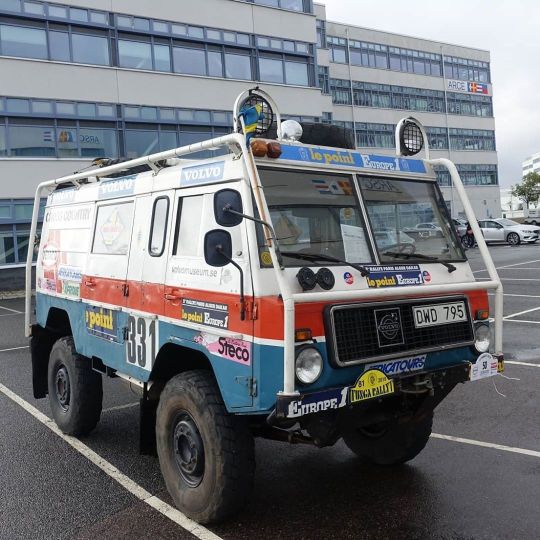
1975 Volvo C303, class winner of trucks under 10 tonnes in the 1983 Rally Paris-Dakar. Seen at the VROM 2019 (Volvo Rendezvous & Owners Meeting) at the Volvo-Museum in Gothenburg. #volvoweek #VolvoC303 #VolvoC303Dakar #ParisDakar1983 #volvolaplander #Volvo #classicvolvo #volvoclassic #vintagevolvo #volvolove #novolvonolove #volvonation #volvoforlife #volvomoment #volvostagram #adventuremobile #adventurevehicle #classictruck #oldtimer #vintagetruck #classiccarspotting #vintagecarspotting #classiccaroftheday #classicsdaily #automotivephotography #teilixvolvo #VROM #VolvoMuseum #VROM2019 (hier: Volvo Museum) https://www.instagram.com/p/CFcLZIwpNxJ/?igshid=kuecthzux0bm
#volvoweek#volvoc303#volvoc303dakar#parisdakar1983#volvolaplander#volvo#classicvolvo#volvoclassic#vintagevolvo#volvolove#novolvonolove#volvonation#volvoforlife#volvomoment#volvostagram#adventuremobile#adventurevehicle#classictruck#oldtimer#vintagetruck#classiccarspotting#vintagecarspotting#classiccaroftheday#classicsdaily#automotivephotography#teilixvolvo#vrom#volvomuseum#vrom2019
17 notes
·
View notes
Photo
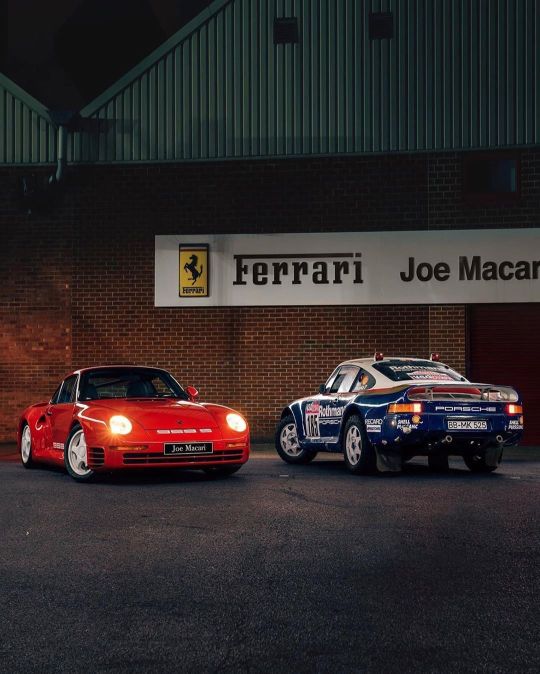
After several victories at the Le Mans 24 Hours, Porsche also wanted to show success in rallying. So in 1982 the 959 Rally Project was born, which was developed from a 911 SC according to the then current FIA Group B regulations! 😎 . © Photos: @alexpenfold // Text: @lnd.magazine __________ HISTORY: . At the beginning, three extensively revised 911s with four-wheel drive were produced, which were named 911 4×4 (or 953). The 959 was not presented to the public until the following year 1983 at the IAA in Frankfurt. Despite this, the Prodrive team achieved a surprise victory in 1984 with a 911 4×4 (953) at the Paris-Dakar Rally under the Frenchman René Metge. 🍾 . Although the 200 road models of the 959 required for the Group B homologation had already been ordered at the IAA, their completion was delayed due to the great complexity of the 959's construction. 🤷🏻♂️ . It was not until 1987 that the first units were delivered. . After the surprise success of the 911 4×4 in the previous year, three 959 took part in the 1985 Paris-Dakar Rally. But because the 600 hp biturbo engines were not ready in time, the vehicles had to start with weaker engines. 😕 . At the Pharaohs' Rally from 10 to 19 October 1985, Porsche then used the 959 with the planned biturbo engine for the first time. Saeed Al Hajri and John Spiller won the rally. 😎 . In January 1986, three 959s competed again in the Paris-Dakar Rally and that year, René Metge and Dominique Lemoyne won. In 1996 Porsche also won the 1000 track rally in France with the 959. 🍾🍾 . However, after the Finn Henri Toivonen and his co-driver Sergio Cresto were killed in a fatal accident on 2 May 1986 at the Corsica Rally in the Lancia Delta S4, the FIA finally decided against Group B and also rejected all plans for the prepared Group S. 😕 . After that, Porsche also stopped their ambitions in Rallye Sport. : #911LND #911LegendsNeverDie https://www.instagram.com/p/CB3E7DcAilW/?igshid=svb4hxivqxzu
26 notes
·
View notes
